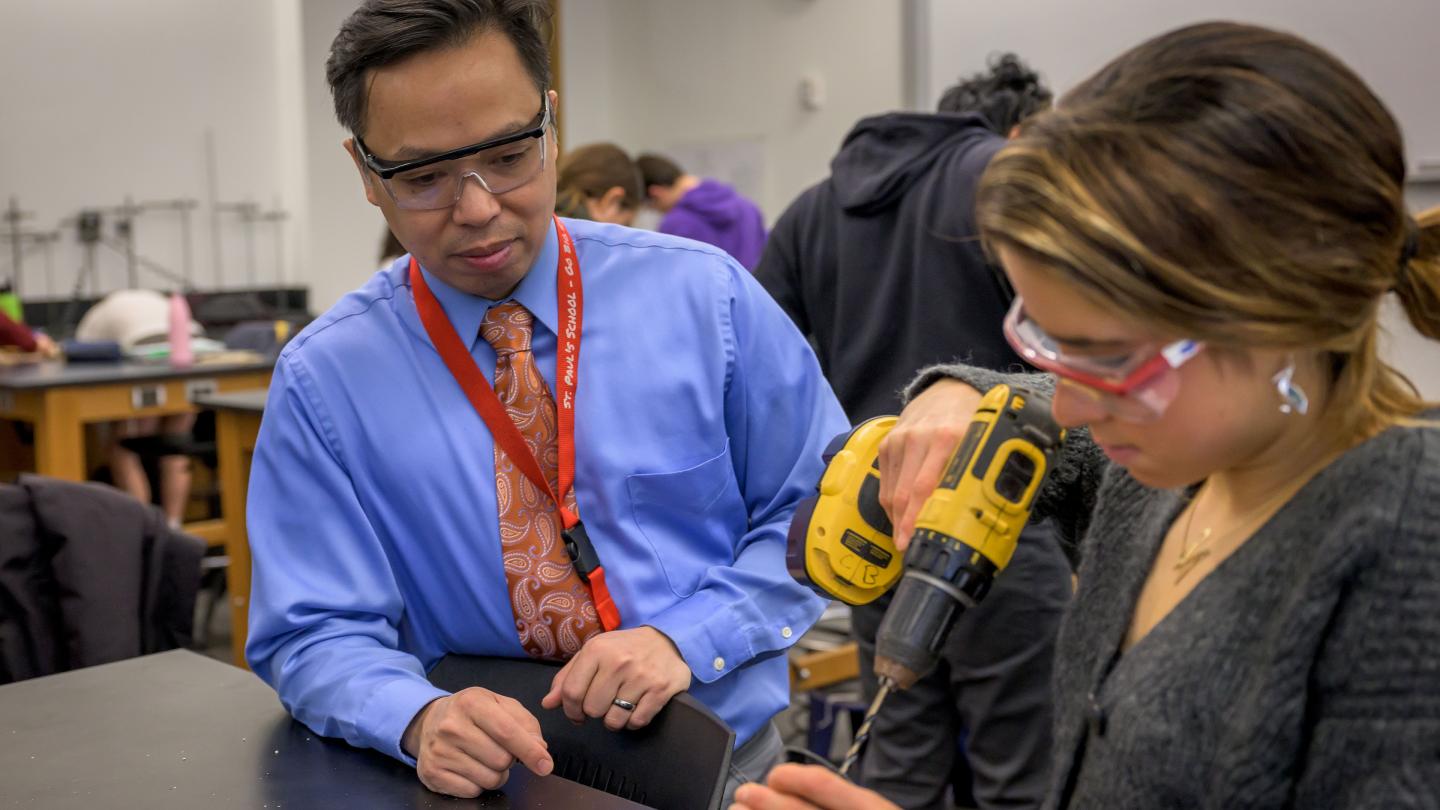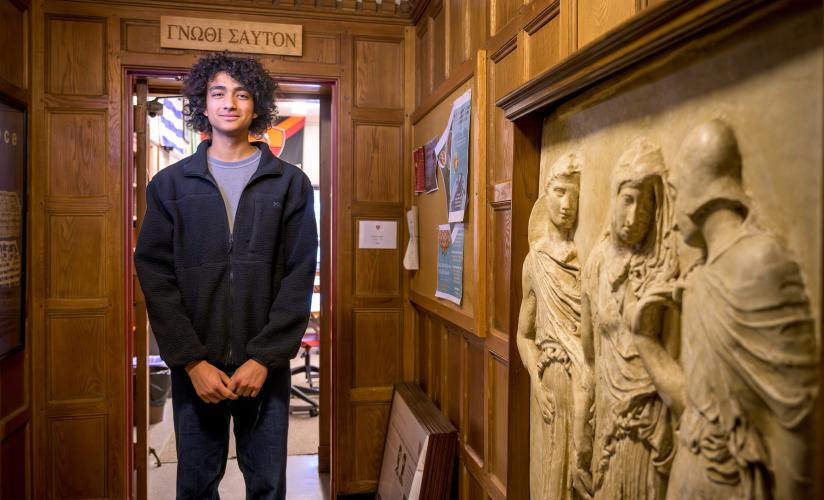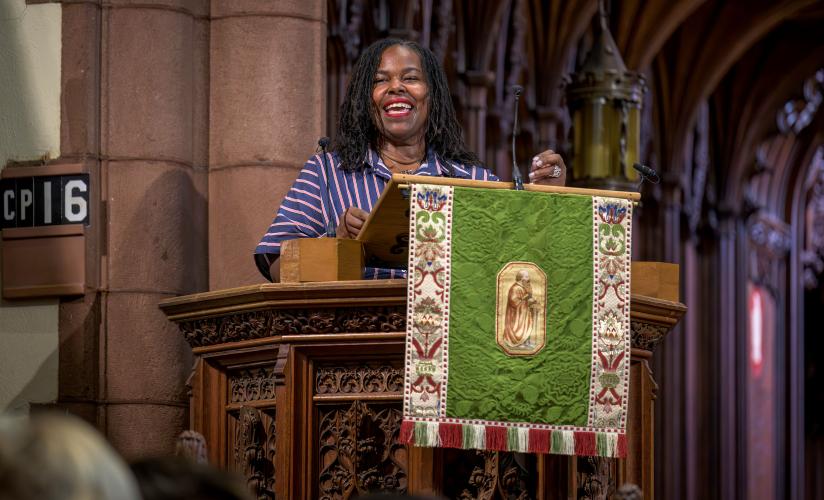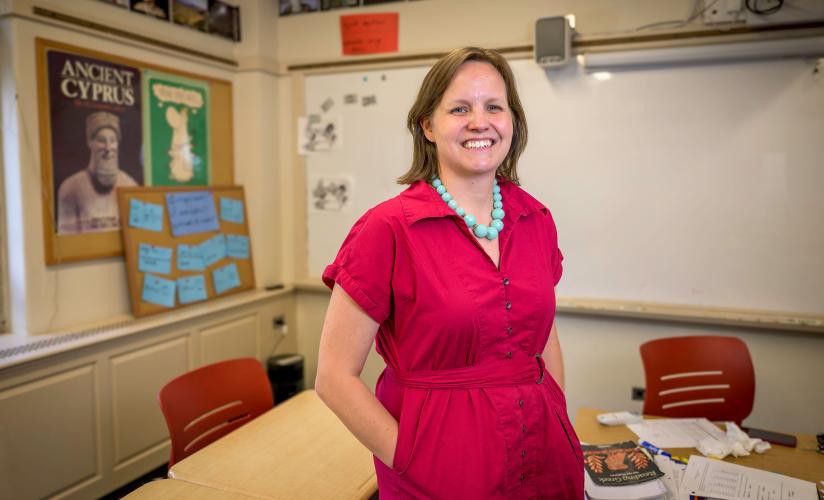

Teacher Mark Hermano helps students experience physics.
BY JANA BROWN
When asked to select a major as an applicant to the University of Illinois Urbana-Champaign, Mark Hermano was undecided, so he checked two boxes.
“I remember checking the box for engineering, but I also checked the box for physics,” says Hermano, a second-year science teacher at St. Paul’s School. “It turned out that there was a major called engineering physics, which was physics through the engineering department that has a lot of course requirements for engineering. You could call it a lucky accident, but that’s how I ended up majoring in physics and eventually became a teacher.”
Born in the Philippines, Hermano came to the U.S. with his family when he was three and grew up in the Chicago area. His father was a mechanical engineer who worked on the first 747s for Boeing — Hermano’s initial inspiration for a career in a STEM field. As a child, he became fascinated with the view of the Fermi National Laboratories, which he could see from the window of his parents’ suburban bedroom. He first became enchanted with the engineering of the lab’s curved concrete building, long before learning of the discoveries being made inside in the field of particle physics.
“Just looking at the building,” Hermano says, “sparked my imagination.”
Before joining the SPS faculty in the fall of 2021, Hermano taught for 10 years at Sacred Heart Cathedral Preparatory in San Francisco; spent another two years teaching at an international school in Indonesia; and five more years as director of the STEM program at St. Timothy’s, an all-girls International Baccalaureate school in Maryland. A few years ago, he and his wife, Karolina, were looking for a place to settle with their growing family, which includes four-year-old daughter Lorelei and two-year-old son Alex. They found a match in St. Paul’s.
“Every person I talked to in the interview process said this is a great place for raising a family,” Hermano says. “Community has always been important in my life. Everybody spoke so highly of the community here, and that’s what really drew me to the School.”
In his first two years at SPS, Hermano has become known for his high-energy teaching style. This year, he’s teaching Physics First and Honors Physics while also helping Rick Pacelli and Seth Cohen with introductory astronomy. Hermano is a big believer in active classrooms that promote hands-on learning — and he designs his lessons with that in mind. He’d rather see his students bouncing a ball to measure height and acceleration than memorize the terms that describe what makes those actions possible.
“It comes back to why I love physics,” he explains. “In biology you can learn about the human body, but unless you’re doing dissections, you’re not going to be able to see inside; it’s hard to see things like DNA. I teach physics because you can see and experience and feel physics. You can take a ball and throw it up in the air and see what path it takes. You can feel the force of pushing something when you make it accelerate. These things are right there for me to give my students firsthand experience.”
One example of that is an experiment with water balloons that Hermano conducts each year. Positioned on the athletic fields, students are asked to calculate the trajectory and distance of the water-filled orbs. Hermano will stand in a specific spot as he watches his charges use a giant water-balloon launcher to test their math.
“If they’ve done their calculations correctly,” says Hermano, “when they launch their water balloons, they should hit me.”
He also has his students design and build their own self-propelled cars, which run on the stored energy of mousetraps and rubber bands. The goal is for a car to build enough power to drive up a double-sided ramp, collide with another, and then push the other car back down the ramp.
While Hermano finds joy in his teaching, he also describes himself as a lifelong learner. In a pair of full-circle moments, Hermano has twice had the opportunity to work at Fermi National Laboratories. In the summer of 2019, he was one of 24 teachers selected by QuarkNet, a research-based professional development program, to work at Fermi Lab as a teaching fellow. At that time, he focused on processing data to measure the energy of the Higgs boson, the particle that gives researchers a deeper understanding of matter. Hermano returned in the summer of 2022 to learn more about the computer science knowledge required to work in particle physics. He is bringing both experiences to his students at SPS, with an eye on the skills they will need for the future.
“My goal has been trying to incorporate more computer programming into my classes,” he says. “Coding is going to become an important skill in the same way we used to think of word processing. I want to demystify computer programming. If my students are unafraid to code, they’ll be more likely to succeed in whatever field they end up going into.”



